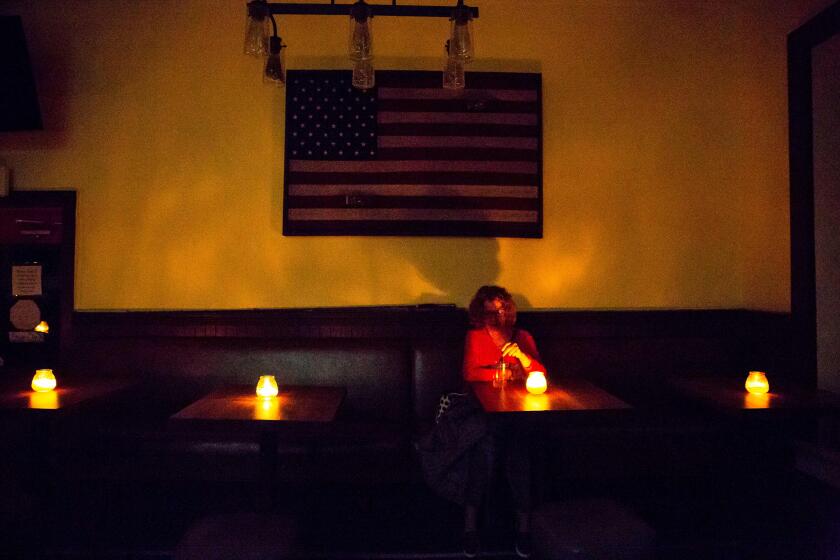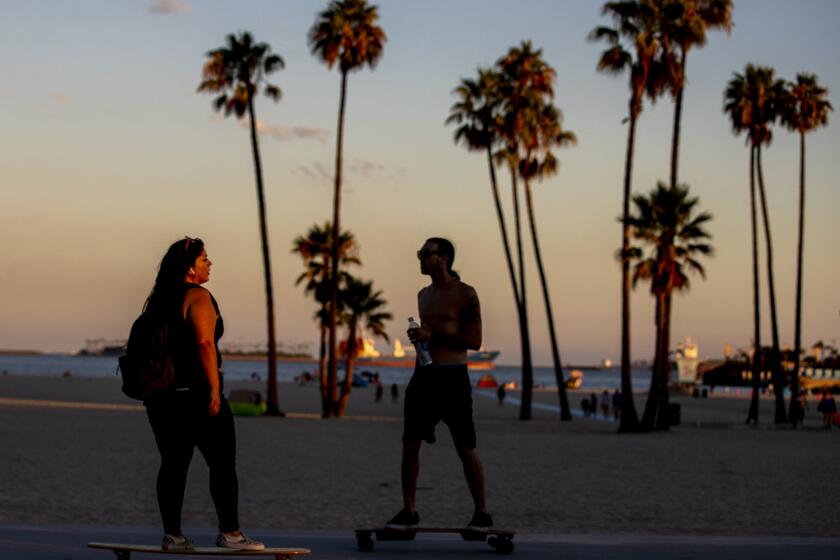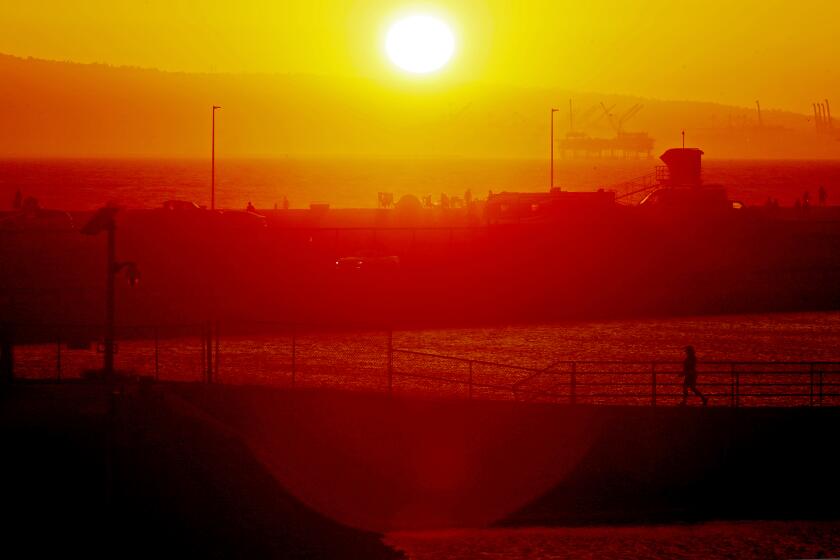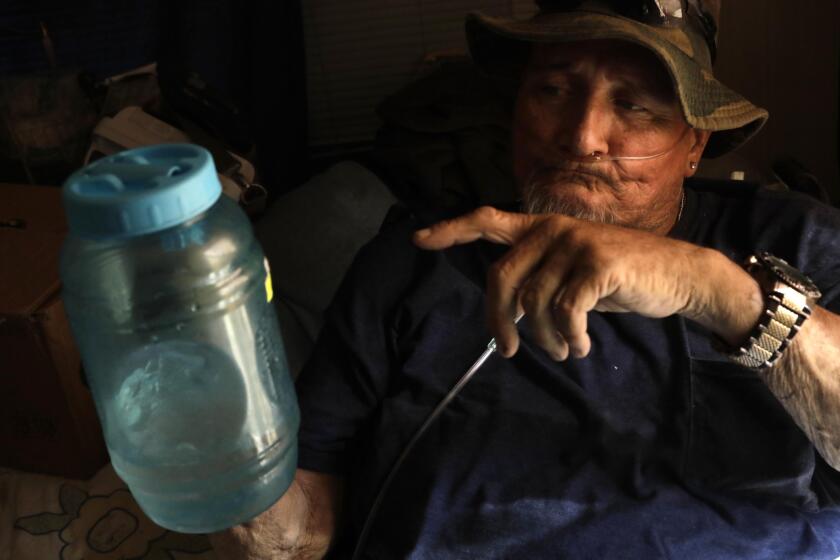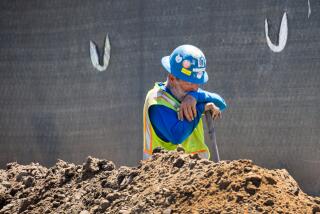Extreme heat wave pushing California power grid to limit, with rolling blackouts possible
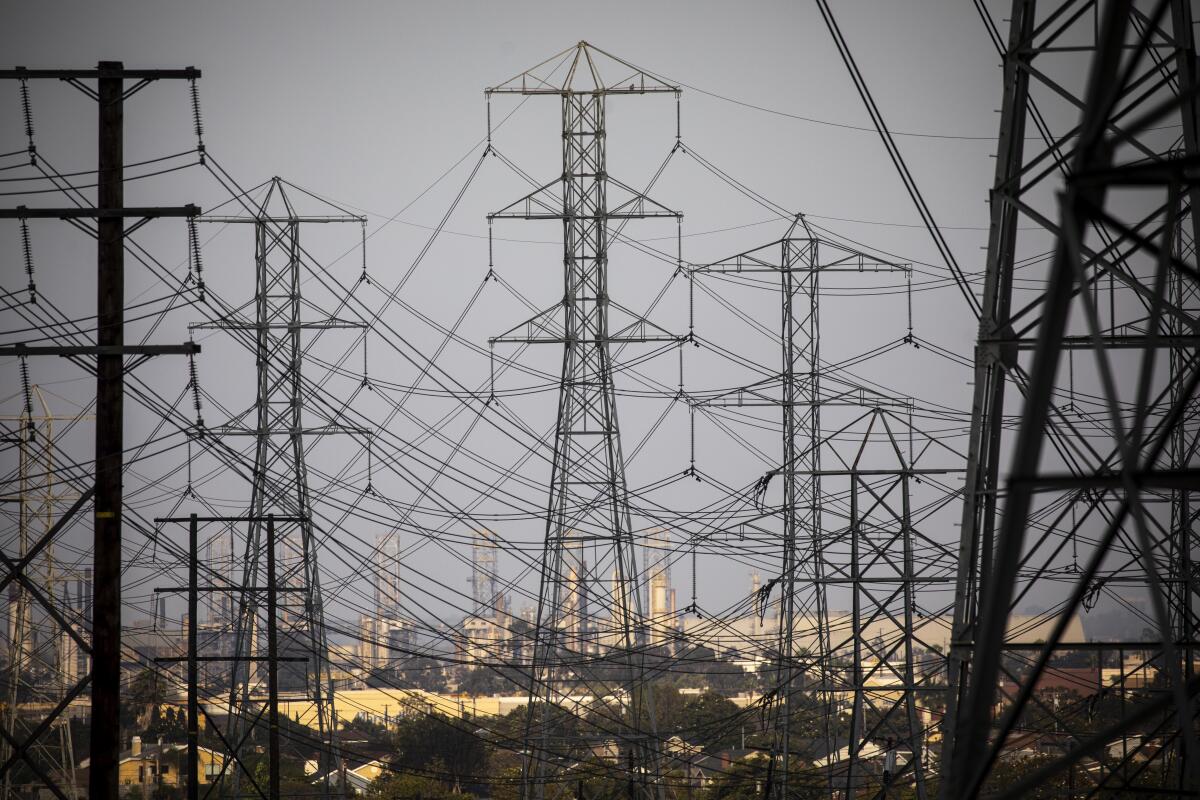
- Share via
The worst heat wave of the year is presenting a critical test for California’s overtaxed power grid, with officials warning rolling blackouts are possible without major conservation efforts during a week of scorching temperatures.
Extreme heat is expected to grip the vast majority of California for at least six days, perhaps even longer.
Authorities are worried about power capacity in part because high temperatures are forecast not just across inland regions that typically broil this time of year, but also along many parts of the coast. That could mean many more people reaching for the air conditioning during peak hours.
“We are anticipating this extreme heat to be a length and duration the likes of which we haven’t experienced in some time,” Gov. Gavin Newsom said Wednesday in urging residents to conserve power.
When there’s a risk of a blackout, how do you prepare? And what should you do — and not do — when one is happening and after it’s over?
Temperatures could hit all-time and monthly record highs, and are expected to be 10 to 20 degrees above average during the day with little relief expected come evening. High temperatures could hit 124 degrees in Death Valley.
“We’re not super confident on when it’s going to end,” Bill Rasch, a meteorologist with the National Weather Service, said of the heat wave.
Utilities have funds available to install air conditioning in low-income households, but for one California family, help did not come soon enough.
Officials are asking Californians to limit electricity use when possible to minimize strain on the state’s energy providers, otherwise risking those rolling blackouts. Losing power during such extreme heat can be highly dangerous, if not deadly, especially for the most vulnerable.
California officials on Wednesday issued the first statewide Flex Alert during this heat wave, as most of the state entered its first day of extreme heat in this wave. A second Flex Alert was issued for Thursday.
During a Flex Alert, consumers are urged to reduce their energy use in the afternoon and evening hours, when the grid is most stressed because of high demand and less available energy from solar panels.
Newsom declared a state of emergency Wednesday following a request from the California Independent System Operator, which operates the state’s power grid, intended to temporarily increase energy production and response systems during the intense period of extreme heat.
“This is going to be a sustained event that’s going to take sustained focus and sustained participation,” said Elliot Mainzer, president of Cal ISO.
From Wednesday through Labor Day weekend, weather forecasters predict temperatures could reach as high as 115 degrees in some parts of Southern California.
The governor’s Office of Emergency Services is tracking cooling centers across the state, and they will continue to expand as the heat event continues, officials said. The office also has generators and rapid response fire teams ready for deployment to communities in need, as the chance for wildfires increases. Officials are preparing for Sunday, Monday and Tuesday to see the highest electricity demands this year— likely above 48,000 megawatts.
The high-pressure system over most of California is expected to bring record-breaking temperatures, part of a “self-perpetuating” system that is becoming more extreme as climate change worsens.
Mark Ghilarducci, director of the office, said the situation is constantly changing.
“It will continue to unfold and look differently across the state in the coming days,” he said.
Despite government projects and efforts to bring more capacity online, the power system remains especially vulnerable because neighboring areas from where California imports energy are also experiencing the crushing conditions. The ongoing drought further strains the energy grid by reducing hydropower supply sources, officials said, along with a small number of plants that have gone offline in recent years.
Siva Gunda, vice chair for the California Energy Commission, said the state has been working to bring more supplies online, including through more projects, and shore up energy reserves.
Read all of our coverage about how California is neglecting the climate threat posed by extreme heat.
Newsom advised Californians to turn their thermostats up to 78 degrees during the Flex Alert from 4 to 9 p.m. Wednesday. The governor warned that Sunday and Monday will be the most challenging days for the energy grid.
The high temperatures hit as the governor and his team pressure lawmakers to pass a bill on the final day of the legislative year to keep the Diablo Canyon nuclear plant open until 2035.
The plant, which sits on the coast of San Luis Obispo County and generated 6% of the electricity in the state last year, is slated to close in 2025.
Newsom argues Diablo must stay open for California to keep the lights on during heat waves and avoid a repeat of the rolling blackouts the state experienced two years ago. Environmental groups that pushed six years ago for the closure of Diablo strongly oppose.
The heat wave began Wednesday with daily heat records in some parts of Southern California.
Woodland Hills reached 112 degrees, breaking the previous record of 111 degrees for Aug. 31 set in 1998. Burbank’s high of 112 broke the previous daily record of 108 degrees set in 2017, and Sandberg reached 100 degrees, exceeding the previous high of 98 degrees, also in 2017.
And it’s just the beginning for the Labor Day weekend and beyond.
Temperatures along the coasts could range from 80 to 95 degrees Wednesday through Saturday, before increasing to 100 degrees Sunday and Monday, the weather service said.
The valleys and mountains could be pummeled by 95- to 110-degree temperatures Wednesday through Saturday, and highs of up to 115 Sunday and Monday, meteorologists said.
“This is not a normal heat wave,” meteorologist Trevor Boucher with the National Weather Service in Las Vegas said.
Times staff writer Nathan Solis contributed to this report.
More to Read
Sign up for Essential California
The most important California stories and recommendations in your inbox every morning.
You may occasionally receive promotional content from the Los Angeles Times.
